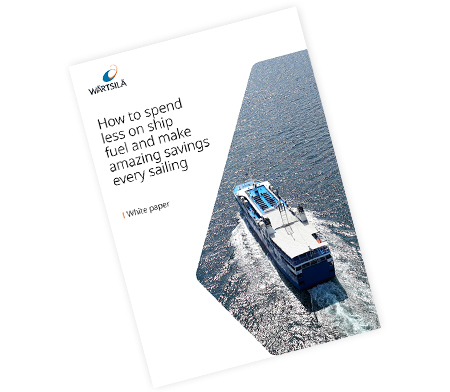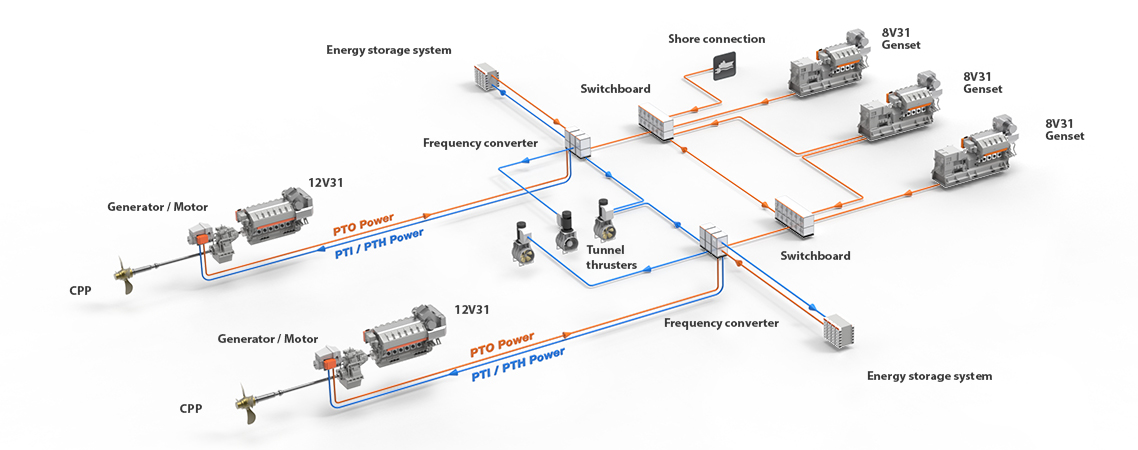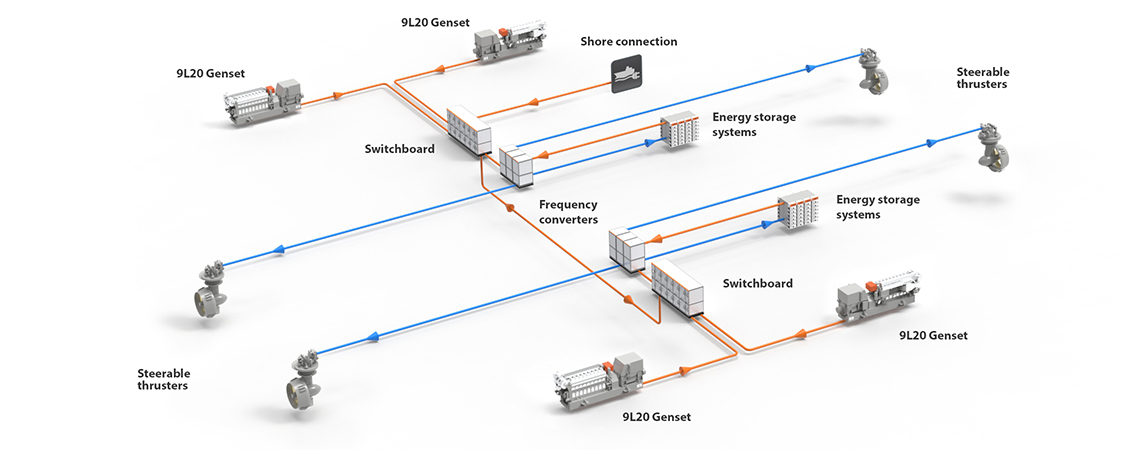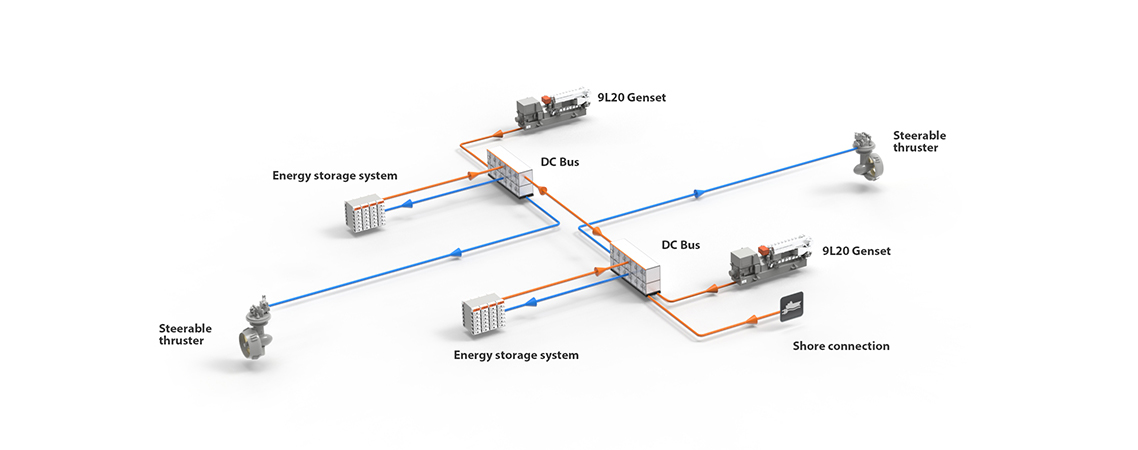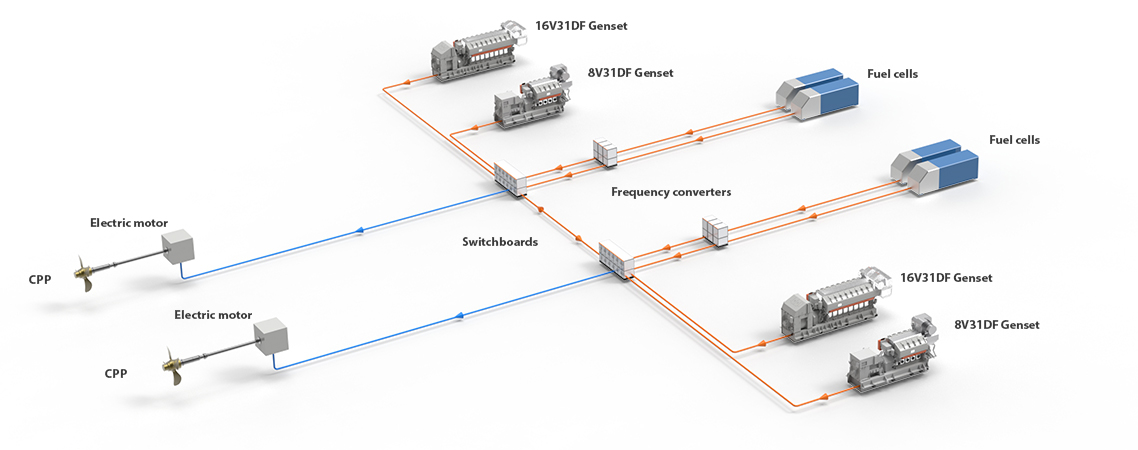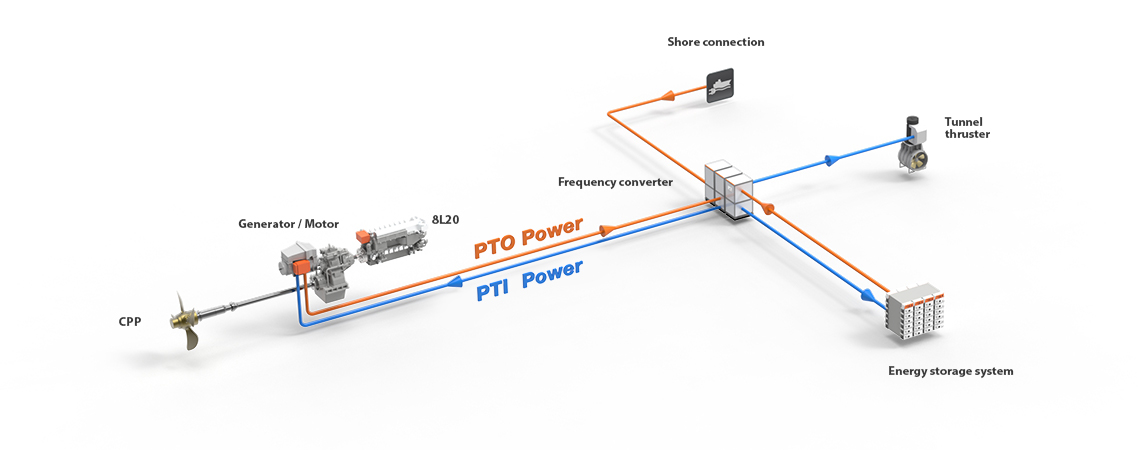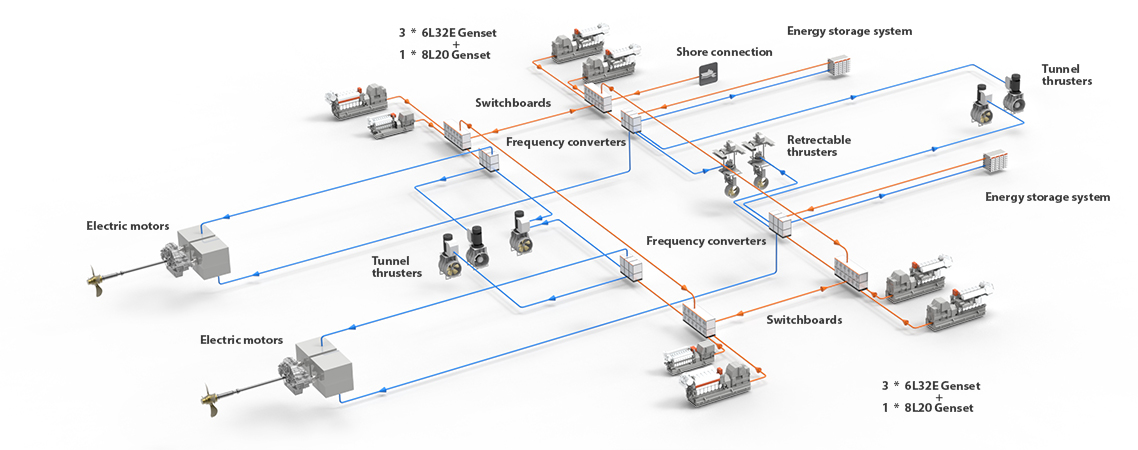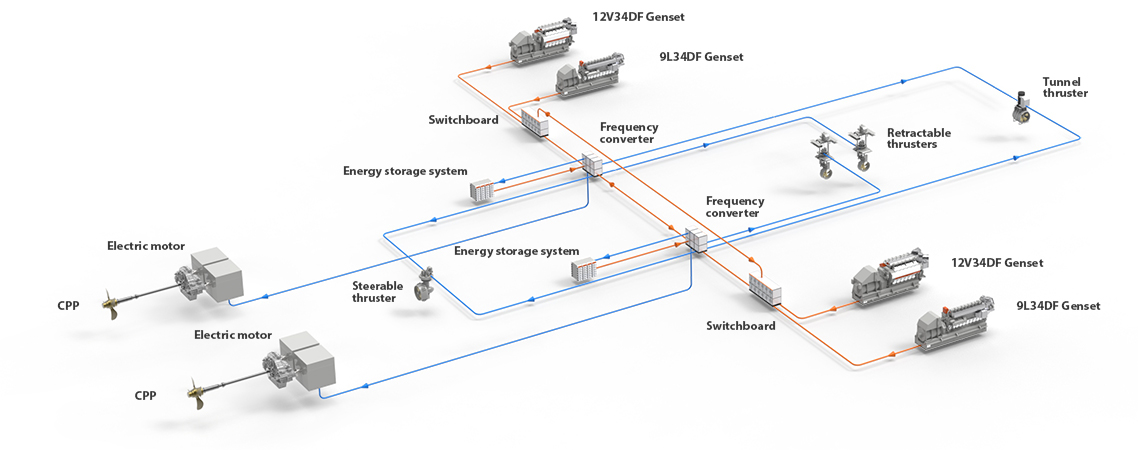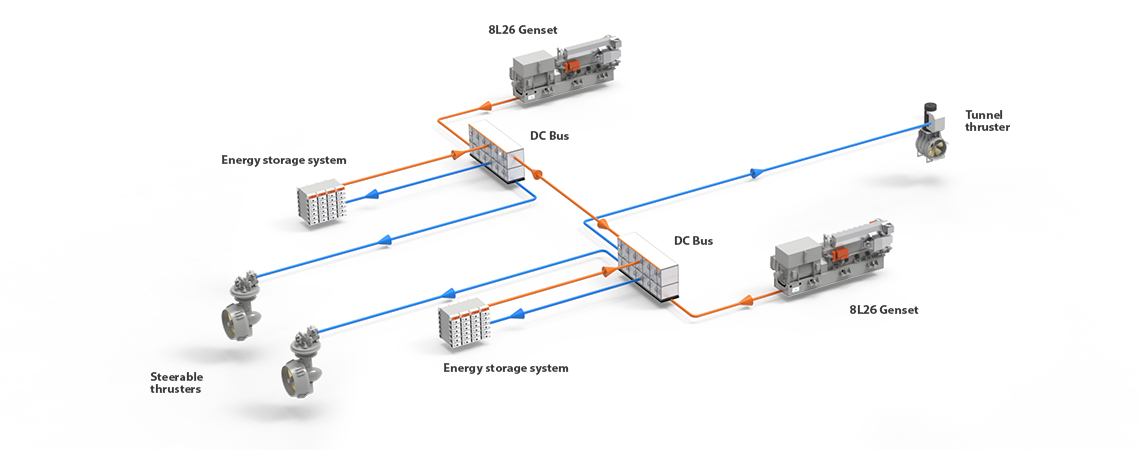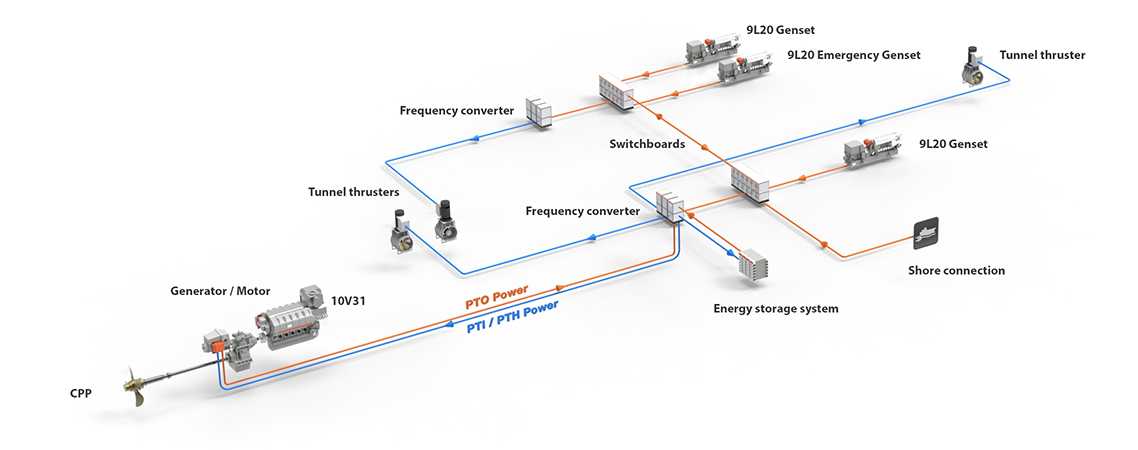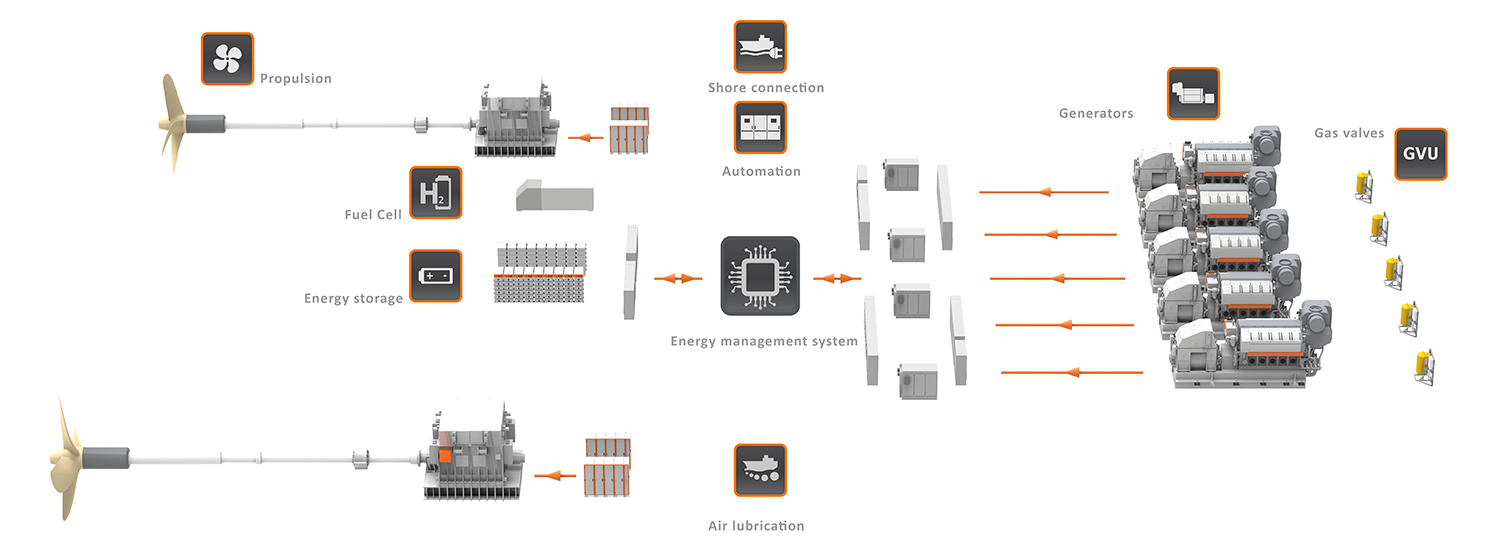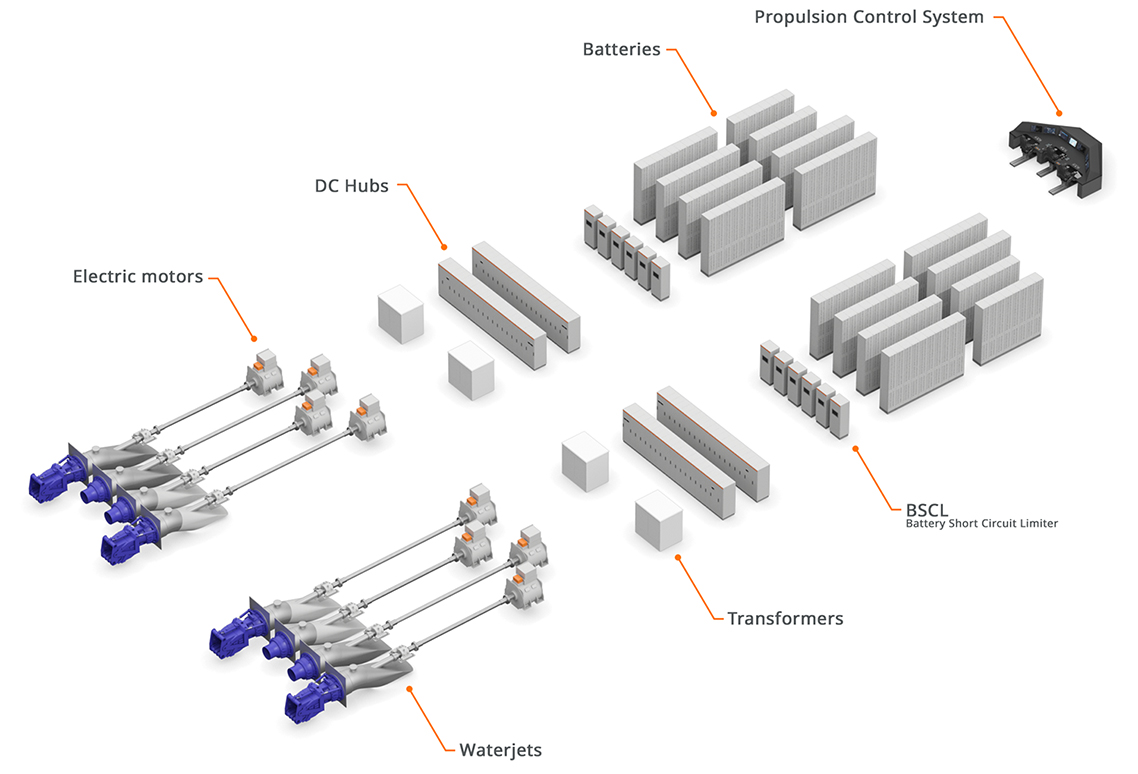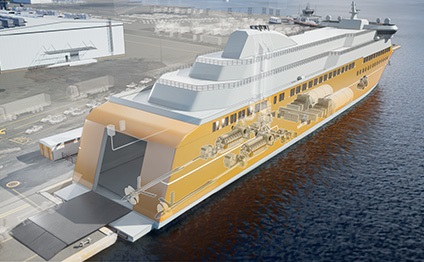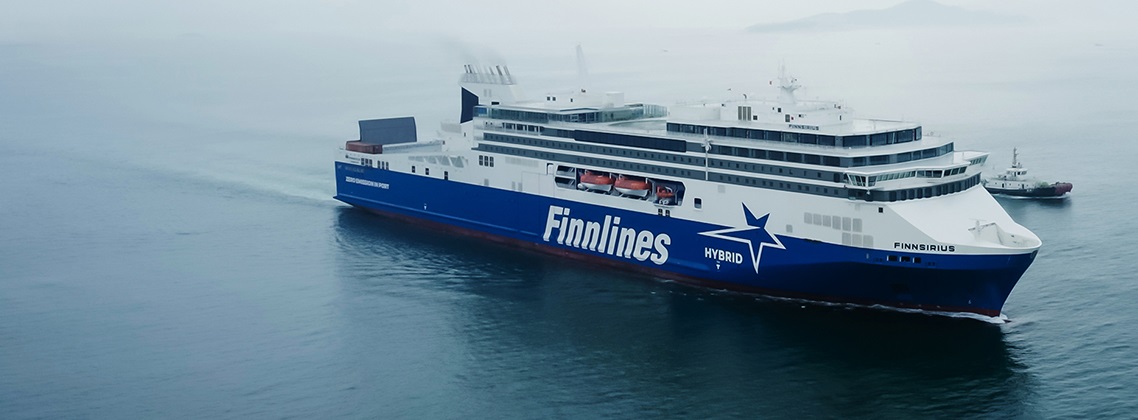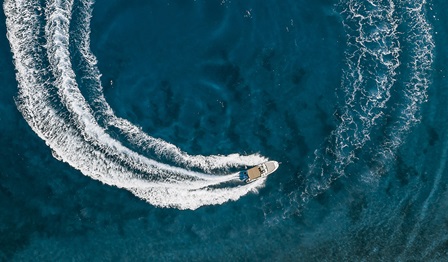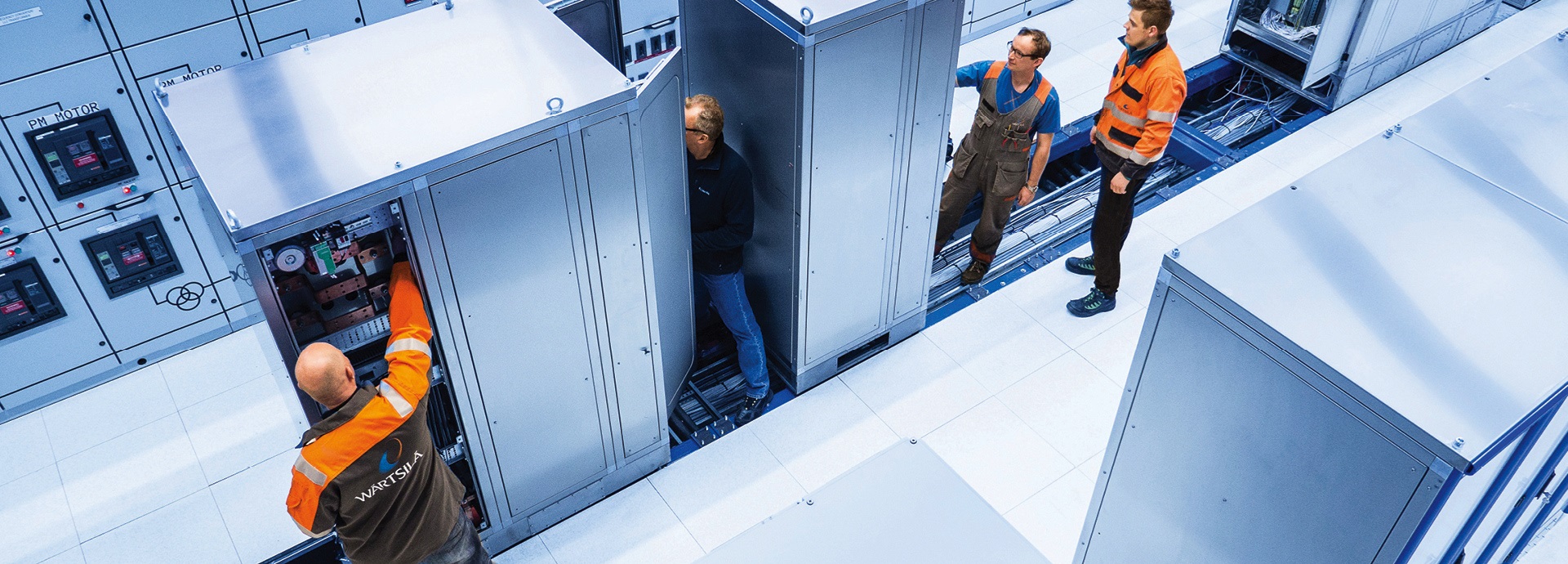
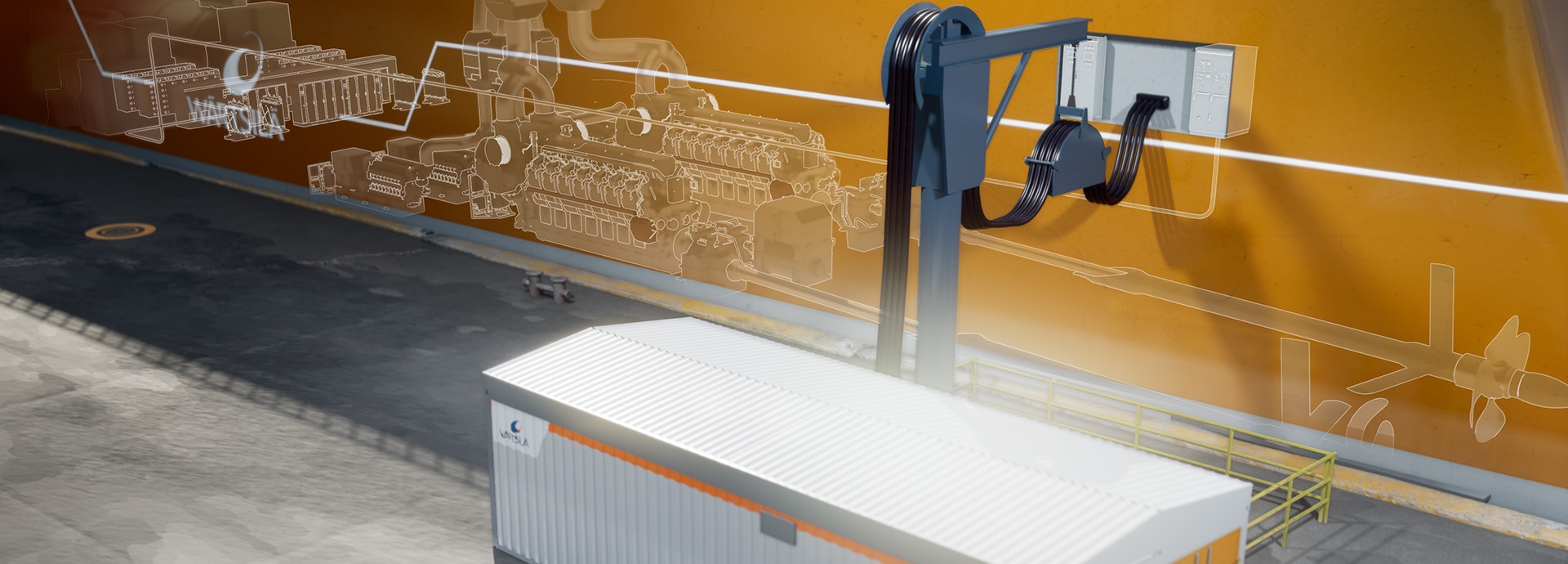
There’s more to electric shipping than electric propulsion
Electric shipping and hybrid ships are important solutions now that the marine industry has entered a new era – the age of decarbonisation and strict regulation. Vessels must be future proof: flexible enough to adapt to the changing needs in the future. As the regulation evolves and restrictions on emissions become stricter, the best way to stay competitive is to rely on the best available technologies. Electric shipping or ship electrification is one of the key solutions for marine decarbonisation.
The future of shipping is here: Play the video to discover how these interesting electrical solutions can reduce the environmental footprint for different vessels.
Electrical solutions and decarbonisation
Electrical solutions will deliver reduced emissions as retrofits and offer a competitive advantage also for newbuild vessels.
Electrical solutions have been part of vessel design for many years in the form of diesel-electric propulsion or shaft generators, for example. The share of green energy – from renewable sources such as wind, water, and solar – in land-based electrical grids is on the increase.
It makes sense for ships to take advantage of shore-based green energy. As an example, using a shore connection can reduce emissions significantly while the ship is in port. Depending on the vessel and its operating profile there are many ways to reduce its emission footprint. The key is optimisation: finding the right solution for each vessel.
Slow steaming used to be the favourite solution for many vessels to reduce emissions. Flexibility was not an issue then, so this means that some vessels will never be fully optimised. Electrical systems onboard make it possible to use smarter propulsion systems. Smarter, more resilient, and more flexible – and thus capable of adapting to the changing needs in the future of shipping.
What powers cruise ships in the future? Will cargo ship engines be electric?
Deepsea vessels will have to adopt green fuel engine technology to decarbonise. Electrical systems will be an integral part of the system including shaft generators and shore connection. Electric cruise ships and electric cargo ships are a futuristic concept, but they can go hybrid and take advantage of solar energy to improve their efficiency.
Tugs can benefit from hybrid or even full electric solutions. They operate close to the shore to land based electrical infrastructure. Because they have high load variations and spend long periods of time on standby, hybrid electric solutions will cut their GHG emissions significantly.
Ferries are often part of local transportation routes and can easily use the land-based charging infrastructure. If the route is short enough, the ferry can even be fully electric. Many ferries still prefer to have a hybrid electric solution to minimise risks.
Any short-distance or coastal vessel can be a hybrid ship. They can charge their ship battery with green energy available at the port. They can be a zero emission ship while manoeuvring, station keeping, and port navigating if they switch to full electric power during those operations.
Could you benefit from a hybrid solution?
Hybrid systems can be used on a wide variety of vessel types, both newbuilds and retrofits. Discover the clever ways that a hybrid solution could help you cut your vessel’s operational costs.
Battery-powered ships, hybrid ships or diesel-electric ships?
Which solution would be optimal for your vessels? The following are examples of actual solutions.
E&PMS landing page Solutions
Expand all
Why electrification – market trends and drivers
Watch the video and you will also learn three reasons to consider ship electrification as a solution for marine decarbonisation.
Solutions in more detail
Customer stories
Discover the benefits others have already gained from marine electric solutions.
Insights on electric shipping
Discover these insightful articles and case studies – they will build your knowledge of ship electrification and hybrid marine solutions.
Webinars related to electric shipping
Explore what you need to know about electric shipping and hybrid ships: watch the webinar recordings to learn from experts from the maritime industry and associations.
Hand-picked press releases
Wärtsilä electrification solutions to support CSL with emission reduction targets
Technology group Wärtsilä will supply a hybrid-electric propulsion system for an 11,000 dwt Limestone Carrier. The vessel was contracted by Montreal-based CSL Group (“CSL”) with CCCC Shanghai Equipment Engineering and Jingjiang Nanyang Shipbuilding. The order with Wärtsilä was booked in Q1 2024.
The order reflects CSL’s focus on reducing its emissions profile via a comprehensive decarbonisation strategy. Wärtsilä has been closely involved in developing the concept for the hybrid-electric propulsion system selected to optimise the engine and battery loading for the ship’s operating conditions. The system will provide redundancy when operating in confined waters to improve safety, while at the same time improving efficiency and reducing fuel consumption.
“We require an electrically integrated hybrid-powered propulsion solution from a single-source supplier capable of providing lifecycle support. Wärtsilä was selected for our newbuild project because of their proven ability, experience and track record in delivering high-quality electrification and hybridisation systems,” says Frédéric Jauvin, CSL’s Vice-President, Global Technical Services.
The Limestone Carrier, when delivered in 2026, will be the world’s first fully electric battery-capable self-unloading vessel. It will initially run on a hybrid diesel and battery system, with 50% of total battery capacity installed replacing diesel with electric power. By 2031, the aim is to run the ship entirely on electric power, further reducing carbon emissions to less than 10%.
“Wärtsilä is committed to making decarbonised shipping possible, so we are delighted to be supporting CSL with solutions that enhance the sustainability of their fleet,” comments Torsten Büssow, Director, Electrical & Power Systems Business Wärtsilä Marine. “This is a short sea shipping vessel that will operate with a lot of manoeuvring and variable load profiles, and electrification and hybridisation systems are the most efficient for such vessels.”
For this vessel, Wärtsilä will supply the whole hybrid electric propulsion system, including generators, DC hub, Energy and Power Management System, main propulsion e-motors, bow thruster e-motors, and the battery solution. Delivery is scheduled for early 2025.
Media contact for more information on this release:
Isabella Alder
Positioning and Strategic Communications Manager, Wärtsilä Marine
Tel: +44 (0) 7792 681 757
marine.media@wartsila.com
Image caption: Example image of a ship electrification ecosystem. © Wärtsilä Corporation
All Wärtsilä releases are available at https://www.wartsila.com/media/news-releases and at http://news.cision.com/wartsila-corporation where also the images can be downloaded.
Use of the image(s) is allowed only in connection with the contents of this press release. Wärtsilä images are available at https://www.wartsila.com/media/image-bank.
Wärtsilä Marine in brief
Wärtsilä Marine is a global pioneer in power, propulsion and lifecycle solutions for the marine market. We develop industry-leading technologies, advancing maritime's transition to new fuels. We support building an end-to-end digital ecosystem where all vessels and ports are connected. Ultimately, Wärtsilä Marine is driving the shipping industry forward on its journey towards a decarbonised and sustainable future through our broad portfolio of engines, propulsion systems, hybrid technology, exhaust treatment, shaft line solutions and digital technologies, as well as integrated powertrain systems. Our offering, which is underpinned by our performance-based agreements, upgrades, lifecycle solutions, decarbonisation services, as well as an unrivalled global network of maritime expertise, delivers the efficiency, reliability, safety, and environmental performance needed to support a safe and sustainable future for our customers, our communities and our planet.
www.wartsila.com/marine
Wärtsilä in brief
Wärtsilä is a global leader in innovative technologies and lifecycle solutions for the marine and energy markets. We emphasise innovation in sustainable technology and services to help our customers continuously improve environmental and economic performance. Our dedicated and passionate team of 17,800 professionals in more than 280 locations in 79 countries shape the decarbonisation transformation of our industries across the globe. In 2023, Wärtsilä’s net sales totalled EUR 6.0 billion. Wärtsilä is listed on Nasdaq Helsinki.
www.wartsila.com
Take your easiest step on your journey to ship electrification - get in touch and let’s discuss your needs and options!
